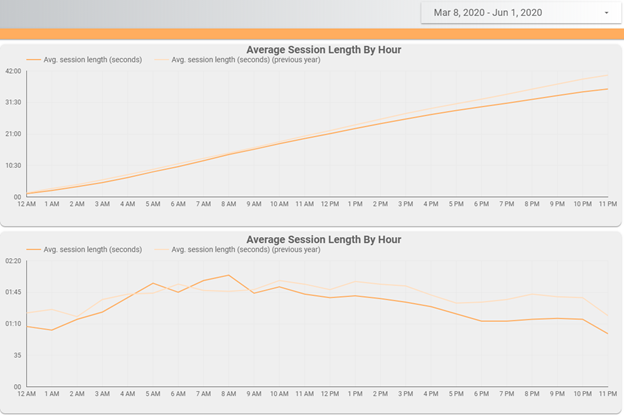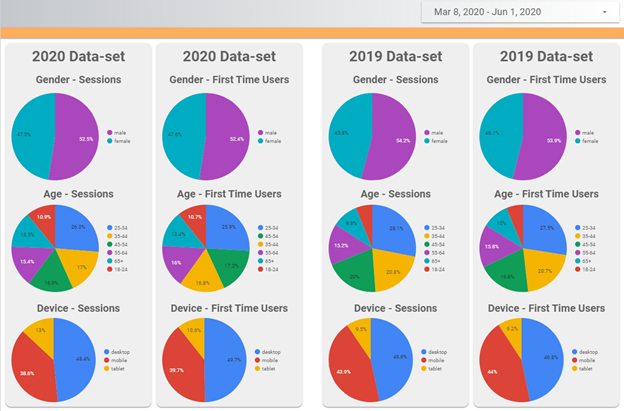Major shifts in digital behaviours are apparent for the vast majority of Canadians and Canadian businesses that are adapting to a challenging 2020 economy.
Consumer behaviours shifted violently in March of 2020, so much so that Google rolled out an (unconfirmed) update around the 11th of March to match consumers change in search behaviours during that same time frame. This was driven primarily due to the pandemic, however search result pages across Canada and Ontario, had major changes in the type of websites that ranked (showed first on Google search).
By mid-April, Google published how search behaviours had changed due to the pandemic. What Google saw was categorized into 5 areas, with the biggest category called “Assembling Critical Information”. This category included searches related to retail and home delivery as the biggest sub-topics. These areas make up part of Google’s own push to “YMYL” (Your Money, Your Life) types of search results, which aims to provide the best search results possible that are related to users searches that involve a user's money (such as e-com) or a user’s life (such as breakout searches for ‘can you freeze..’ type of searches).
After Google had published the changes in behaviours on search in mid-April, Google rolled-out and confirmed a major update on May 4th. This update had a major effect on rankings across Google. Seeing how Google’s focus is on the most relevant search results for their users, it makes sense that Google’s May update had further focus on “YMYL” types of searches/results during early 2020. Here at Thinkr, we continued to see significant ranking and traffic increases for our e-commerce clients during the same time period. One in particular was experiencing record setting week after week in terms of web traffic as well as real world sales.

Businesses that had already invested in and embraced their online presence (especially e-commerce) before any of the updates in 2020, were very well positioned to make gains early in the year.
The speed at which Canadian consumers have embraced the digital realm has been a quantum leap forward, considering that Canadians are typically slower to embrace new technologies and new ways of doing things in their daily lives. More specifically, working from home has had a major impact on the internet usage behaviours of Canadians across the country for both work and entertainment purposes. A typical workday has been condensed due to not commuting and distractions at home, as seen in this specific case of online usage trends below.

The traditional workday as seen in 2019 and earlier spread across 7 am to 6 pm, accounting for commuting time and the earlier birds into a workplace setting. This clearly has shrunk in 2020 to a more defined 9 am to 4 pm timeframe in the day. This, plus noticeable drops in session length, suggests narrowing of attention spans and the importance of high quality and specific content for intended audiences.

Device type data also showed the trend of Canadians across the country staying home during early 2020. An increase in desktop sessions in 2020 versus 2019 shows that Canadians across the country were less mobile, in the sense of being out of the home, while also spending more time on larger screen devices such as desktops and tablets.

This is confirmed through complied data from CIRA’s 2020 Internet Factbook of Canada:

We can also explore this data through the Toronto Internet Exchange public traffic stats; the start of the pandemic and work-from-home mandates across Ontario noted by the red arrow.

What is interesting with this data, is that although a typical workday is ‘shorter’, Canadians are using the internet far more than ever. Entertainment, shopping, social networking, and finances, overall usage time of the internet is up. This is one of the reasons why digital marketing popularity has increased so heavily in 2020.
With the increased usage of the internet in all aspects of Canadian life, businesses have been innovating and adapting to connect with their audiences and customers online in several ways. Of course, digital marketing, re-marketing, tracking, and attribution, are all critical elements to a digital campaign; however, competition on digital platforms is increasing. This increase in competition online is leading to audiences that are increasingly desensitized to digital ads, are more aware of ‘typical’ online ads, and avoid ads either on purpose or subconsciously.
Businesses that are advertising online now, and in the coming year, need to make sure that their ads span across multiple mediums, stand out from the competition in terms of visual and audio creative, capture analytics and key-performance-indicators, as well as being supported by a marketing strategy.
 BY
BY 

